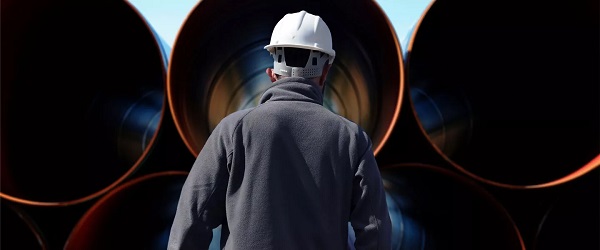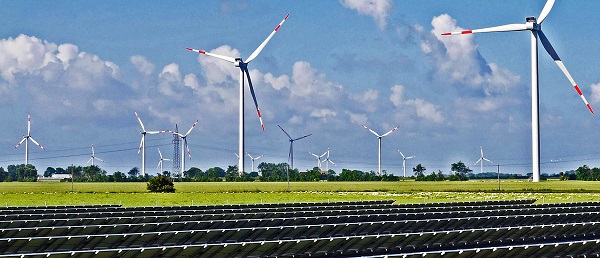Energy
Ottawa’s mixed signals create more uncertainty in energy sector

From the Fraser Institute
By Julio Mejía and Elmira Aliakbari
The Carney government continues to send mixed signals to Canada’s energy sector. Earlier this month, less than 48 hours after Prime Minister Carney expressed conditional support for new pipelines, Steven Guilbeault, a high-profile member of Carney’s cabinet, dismissed the need for additional pipeline infrastructure, claiming that the Trans Mountain pipeline is operating at “about 40 per cent capacity” while also citing a lack of private-sector interest in building east-west pipelines due to an upcoming peak in oil demand.
But claims about the Trans Mountain pipeline from Guilbeault—former Minister of Environment and Climate Change, now Minister of Canadian Identity and Culture—are inaccurate. They also overlook a key point—despite regulatory hurdles, the energy industry maintains a strong interest in building pipelines to meet the growing global demand.
Canadians may recall the Trans Mountain Pipeline project—running between Strathcona County, Alberta and Burnaby, British Columbia—was marked by delays and overruns. After the Trudeau government purchased it from Kinder Morgan for $4.5 billion in 2018, costs ballooned to $34 billion. Since its opening in May 2024—five years behind schedule—the pipeline has reached 89 per cent capacity utilization (more than twice what Minister Guilbeault claimed), with projections showing it could approach 96 per cent in the near future. In short, more pipeline capacity will be needed soon.
Minister Guilbeault’s statements about peak oil demand are also off the mark. For starters, the Energy Information Administration forecasts that global oil consumption will keep growing through 2050—not just until 2028-2029 as Guilbeault claimed. Firms such as Goldman Sachs and GlobalData suggest that oil demand is set to rise well beyond 2030. Meanwhile, the Organization of the Petroleum Exporting Countries (OPEC) goes even further, forecasting that global oil demand will continue growing past 2050 while stating there’s “no peak oil demand on the horizon.” Simply put, it’s shortsighted for the government to undermine infrastructure projects when multiple credible forecasts point to increased demand.
Moreover, pipelines transport more than just crude oil—they also deliver natural gas to domestic markets and coastal ports for export. Even the International Energy Agency (IEA), which Guilbeault cites as his source, projects that global demand for liquified natural gas (LNG) will continue to grow steadily through 2050. This strong LNG demand presents a significant opportunity for Canada to become a major LNG exporter and provide cleaner burning fuels. But to seize this opportunity, we need infrastructure to get our energy to tidewater.
Furthermore, Guilbeault’s claim that there’s no interest in building east-west pipelines also contradicts industry sentiment. A recent survey by KPMG, a leading audit and consulting firm, found that more than 80 per cent of Canadian energy and natural resource CEOs support additional pipelines and infrastructure on both the west and east coasts to access international markets.
Currently, most of our oil and natural gas exports go to the United States. This dependence on the U.S. for energy exports has made Canadian energy producers vulnerable to U.S policy changes (as seen with the recent threat of U.S. tariffs on Canadian energy). Building more pipelines would reduce our reliance on a single buyer and open access to Canadian refineries and ports, enabling us to export oil and gas to other markets, including both Europe and Asia.
In fact, it’s not just the industry that calls for more energy infrastructure. Recent polls indicate that most Canadians support building additional oil and gas pipelines to all coasts, and LNG facilities, to diversify energy exports beyond the U.S. Yet, federal polices continue to stand in the way of critical energy infrastructure. For instance, Bill C-69, also known as the Impact Assessment Act, has created massive uncertainty by introducing subjective criteria including “gender” implications into the evaluation of major energy projects. Similarly, the federal government’s greenhouse gas emissions cap, which exclusively targets the oil and gas sector, deters investment by effectively requiring a reduction in production and, in turn, reducing the need for new infrastructure.
Minister Guilbeault’s inaccurate statements and the Carney government’s continued mixed signals deepen the uncertainty for investors. Rather than creating confusion with conflicting statements, the federal government should provide clarity through a competitive regulatory framework—one that allows investors, guided by market realities, to determine when and where pipelines are truly needed.
Business
Inflation Reduction Act, Green New Deal Causing America’s Energy Crisis


From the Daily Caller News Foundation
By Greg Blackie
Our country is facing an energy crisis. No, not because of new demand from data centers or AI. Instead, it’s because utilities in nearly every state, due to government imposed “renewable” mandates, self-imposed mandates, and the supercharging of the Green New Scam under the so-called “Inflation Reduction Act,” have been shutting down vital coal resources and building out almost exclusively intermittent and costly resources like solar, wind, and battery storage.
President Donald Trump understands this, and that is why on day one of his administration he declared an Energy Emergency. Then, a few months later, the President signed a trio of Executive Orders designed to keep our “beautiful, clean coal” burning and providing the reliable, baseload, and affordable electricity Americans have benefitted from for generations.
Those orders have been used to keep coal generation online that was slated to shut down in Michigan and will potentially keep two units operating that were scheduled to shut down in Colorado this December. In Arizona, however, the Cholla Power Plant in Navajo County was shuttered by the utility just weeks after Trump explicitly called out the plant for saving in a press conference.
Dear Readers:
As a nonprofit, we are dependent on the generosity of our readers.
Please consider making a small donation of any amount here.
Thank you!
Unlike states with green mandates, Arizona essentially has none. Instead, our utilities, like many around the country, have self-imposed commitments to go “Net Zero” by 2050. To meet that target, they have planned to shut down all coal generation in the state by 2032 and plan to build out almost exclusively solar, wind, and battery storage to meet an expected explosive growth in demand, at a cost of tens of billions of dollars. So it is no surprise that like much of the rest of the country, Arizona is facing an energy crisis.
Taking a look at our largest regulated utilities (APS, TEP, and UNS) and the largest nonprofit utility, SRP, future plans paint an alarming picture. Combined, over the next 15 years, these utilities expect to see demand increase from 19,200 MW to 28,000 MW. For reference, 1,000 MW of electricity is enough to power roughly 250,000 homes. To meet that growth in demand, however, Arizonans will only get a net increase of 989 MW of reliable generation (coal, natural gas, and nuclear) compared to 22,543 MW (or nearly 23 times as much) of intermittent solar, wind, and battery storage.
But what about all of the new natural gas coming into the state? The vast majority of it will be eaten up just to replace existing coal resources, not to bring additional affordable energy to the grid. For example, the SRP board recently voted to approve the conversion of their Springerville coal plant to natural gas by 2030, which follows an earlier vote to convert another of their coal plants, Coronado, to natural gas by 2029. This coal conversion trap leaves ratepayers with the same amount of energy as before, eating up new natural gas capacity, without the benefit of more electricity.
So, while the Arizona utilities plan to collectively build an additional 4,538 MW of natural gas capacity over the next 15 years, at the same time they will be removing -3,549 MW (all of what is left on the grid today) of coal. And there are no plans for more nuclear capacity anytime soon. Instead, to meet their voluntary climate commitments, utilities plan to saddle ratepayers with the cost and resultant blackouts of the green new scam.
It’s no surprise then that Arizona’s largest regulated utilities, APS and TEP, are seeking double digit rate hikes next year. It’s not just Arizona. Excel customers in Colorado (with a 100% clean energy commitment) and in Minnesota (also with a 100% clean energy commitment) are facing nearly double-digit rate hikes. The day before Thanksgiving, PPL customers in Rhode Island (with a state mandate of 100% renewable by 2033) found out they may see rate hikes next year. Dominion (who has a Net Zero by 2050 commitment) wanted to raise rates for customers in Virginia by 15%. Just last month, regulators approved a 9% increase. Importantly, these rate increases are to recover costs for expenses incurred years ago, meaning they are clearly to cover the costs of the energy “transition” supercharged under the Biden administration, not from increased demand from data centers and AI.
It’s the same story around the country. Electricity rates are rising. Reliability is crumbling. We know the cause. For generations, we’ve been able to provide reliable energy at an affordable cost. The only variable that has changed has been what we are choosing to build. Then, it was reliable, dispatchable power. Now, it is intermittent sources that we know cost more, and that we know cause blackouts, all to meet absurd goals of going 100% renewable – something that no utility, state, or country has been able to achieve. And we know the result when they try.
This crisis can be avoided. Trump has laid out the plan to unleash American Energy. Now, it’s time for utilities to drop their costly green new scam commitments and go back to building reliable and affordable power that generations to come will benefit from.
Greg Blackie, Deputy Director of Policy at the Arizona Free Enterprise Club. Greg graduated summa cum laude from Arizona State University with a B.S. in Political Science in 2019. He served as a policy intern with the Republican caucus at the Arizona House of Representatives and covered Arizona political campaigns for America Rising during the 2020 election cycle.
Automotive
Politicians should be honest about environmental pros and cons of electric vehicles

From the Fraser Institute
By Annika Segelhorst and Elmira Aliakbari
According to Steven Guilbeault, former environment minister under Justin Trudeau and former member of Prime Minister Carney’s cabinet, “Switching to an electric vehicle is one of the most impactful things Canadians can do to help fight climate change.”
And the Carney government has only paused Trudeau’s electric vehicle (EV) sales mandate to conduct a “review” of the policy, despite industry pressure to scrap the policy altogether.
So clearly, according to policymakers in Ottawa, EVs are essentially “zero emission” and thus good for environment.
But is that true?
Clearly, EVs have some environmental advantages over traditional gasoline-powered vehicles. Unlike cars with engines that directly burn fossil fuels, EVs do not produce tailpipe emissions of pollutants such as nitrogen dioxide and carbon monoxide, and do not release greenhouse gases (GHGs) such as carbon dioxide. These benefits are real. But when you consider the entire lifecycle of an EV, the picture becomes much more complicated.
Unlike traditional gasoline-powered vehicles, battery-powered EVs and plug-in hybrids generate most of their GHG emissions before the vehicles roll off the assembly line. Compared with conventional gas-powered cars, EVs typically require more fossil fuel energy to manufacture, largely because to produce EVs batteries, producers require a variety of mined materials including cobalt, graphite, lithium, manganese and nickel, which all take lots of energy to extract and process. Once these raw materials are mined, processed and transported across often vast distances to manufacturing sites, they must be assembled into battery packs. Consequently, the manufacturing process of an EV—from the initial mining of materials to final assembly—produces twice the quantity of GHGs (on average) as the manufacturing process for a comparable gas-powered car.
Once an EV is on the road, its carbon footprint depends on how the electricity used to charge its battery is generated. According to a report from the Canada Energy Regulator (the federal agency responsible for overseeing oil, gas and electric utilities), in British Columbia, Manitoba, Quebec and Ontario, electricity is largely produced from low- or even zero-carbon sources such as hydro, so EVs in these provinces have a low level of “indirect” emissions.
However, in other provinces—particularly Alberta, Saskatchewan and Nova Scotia—electricity generation is more heavily reliant on fossil fuels such as coal and natural gas, so EVs produce much higher indirect emissions. And according to research from the University of Toronto, in coal-dependent U.S. states such as West Virginia, an EV can emit about 6 per cent more GHG emissions over its entire lifetime—from initial mining, manufacturing and charging to eventual disposal—than a gas-powered vehicle of the same size. This means that in regions with especially coal-dependent energy grids, EVs could impose more climate costs than benefits. Put simply, for an EV to help meaningfully reduce emissions while on the road, its electricity must come from low-carbon electricity sources—something that does not happen in certain areas of Canada and the United States.
Finally, even after an EV is off the road, it continues to produce emissions, mainly because of the battery. EV batteries contain components that are energy-intensive to extract but also notoriously challenging to recycle. While EV battery recycling technologies are still emerging, approximately 5 per cent of lithium-ion batteries, which are commonly used in EVs, are actually recycled worldwide. This means that most new EVs feature batteries with no recycled components—further weakening the environmental benefit of EVs.
So what’s the final analysis? The technology continues to evolve and therefore the calculations will continue to change. But right now, while electric vehicles clearly help reduce tailpipe emissions, they’re not necessarily “zero emission” vehicles. And after you consider the full lifecycle—manufacturing, charging, scrapping—a more accurate picture of their environmental impact comes into view.
-

 Crime14 hours ago
Crime14 hours agoTerror in Australia: 12 killed after gunmen open fire on Hanukkah celebration
-

 Energy2 days ago
Energy2 days agoCanada’s future prosperity runs through the northwest coast
-

 Crime14 hours ago
Crime14 hours agoHero bystander disarms shooter in Australian terror attack
-

 Business21 hours ago
Business21 hours agoInflation Reduction Act, Green New Deal Causing America’s Energy Crisis
-

 Business1 day ago
Business1 day agoFuelled by federalism—America’s economically freest states come out on top
-

 Daily Caller1 day ago
Daily Caller1 day ago‘There Will Be Very Serious Retaliation’: Two American Servicemen, Interpreter Killed In Syrian Attack
-

 illegal immigration2 days ago
illegal immigration2 days agoUS Notes 2.5 million illegals out and counting
-

 Automotive1 day ago
Automotive1 day agoPoliticians should be honest about environmental pros and cons of electric vehicles






